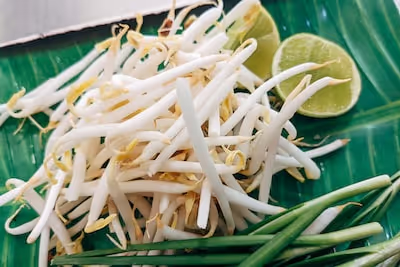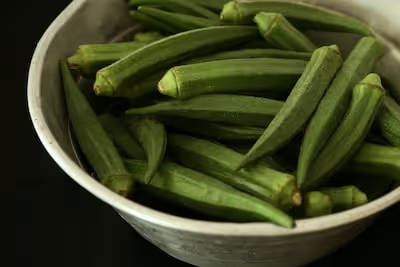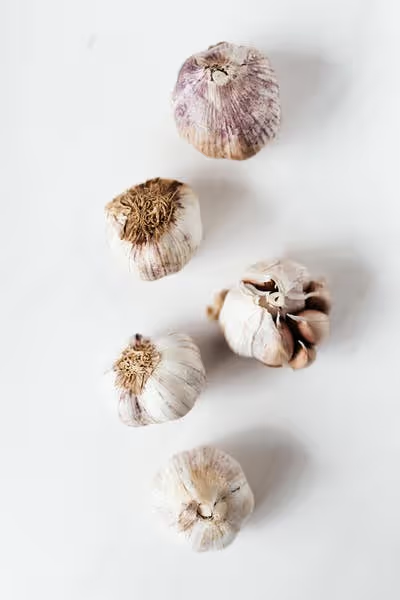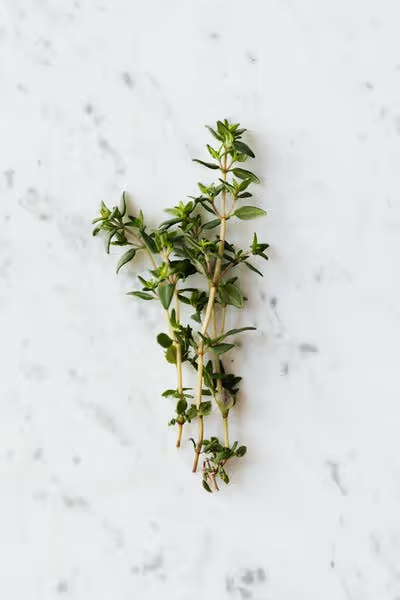Growing Spearmint: Easy Steps for Fresh Herbs at Home
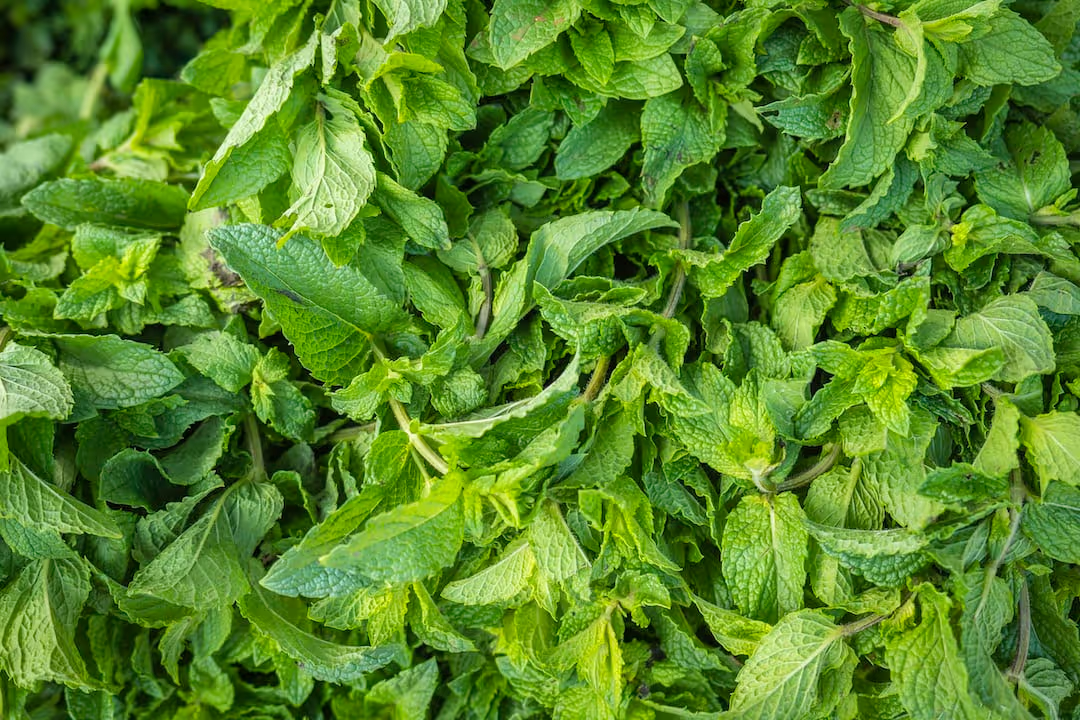
Growing Spearmint
Growing spearmint takes minimal effort, thrives almost anywhere, and rewards abundantly in flavor. To start growing spearmint, plant rooted cuttings or small starter plants in moist, rich soil with partial sun, and keep it regularly watered. With a bit of pruning and containment to prevent wild spreading, you'll soon harvest aromatic leaves perfect for freshening drinks, seasoning dishes, or even soothing homemade teas. Read on for simplified step-by-step instructions that'll keep your mint patch flourishing without fuss.
Cheatsheet: Homegrown Spearmint Step-by-Step
🌱 Site & Soil
Light: Part shade to full sun (4-6 hrs). Soil: Moist, well-drained, rich in organic matter. pH 6.0-7.5.
🛠️ Tools and Products You'll Need
- Spearmint seeds or starter plant
- Pot or garden space (at least 8 in/20 cm wide)
- Quality potting mix or compost
- Mulch (optional)
- Watering can or hose
- Scissors for harvest
🌿 Step-by-Step Planting
- Fill pot or bed with moist, loose soil.
- Sow seeds ¼ in (0.6 cm) deep, or plant starter 2 in (5 cm) below surface.
- Firm gently, water well. Keep soil damp but never soggy.
- Place in bright spot (avoid harsh midday sun if possible).
- Thin seedlings to 6 in (15 cm) apart for airflow.
- Mulch to retain moisture and suppress weeds.
💧 Water & Feed
Water 1-2x per week, more in heat. Fertilize monthly with balanced organic feed.
✂️ Prune & Harvest
Snip tops early and often (4-6 in/10-15 cm high) to encourage bushiness. Heavy harvest May–September. Harvest up to ⅔ at once—regrows fast.
🐝 Health, Nutrition & Sustainability
- Rich in antioxidants, iron, vitamin A.
- May soothe digestion, boost focus.
- Supports pollinators, deters some pests.
- 100% self-sufficiency: grows back year after year.
📈 Intriguing Stat
1 plant yields up to 3+ cups (70 g) per month with regular picking.
-
Growing Spearmint: Easy Steps for Fresh Herbs at Home
I’ve grown mint that behaved like a polite herb and mint that staged a coup, so I learned containment first. Growing Spearmint thrives on simple, consistent care, then repays you with piles of cool, sweet leaves.
Quick-start playbook
- Choose a wide pot with drainage, 12 inches wide and 8 to 10 inches deep, or sink a bottomless nursery pot in the ground as a root barrier.
- Use a loose mix, 60 percent high quality potting soil, 40 percent compost, pH 6.0 to 7.5.
- Give morning sun, 4 to 6 hours, and bright afternoon shade in hot summers.
- Water when the top inch is dry, keep evenly moist, never soggy.
- Pinch tips weekly to keep it dense, harvest hard and often.
At a glance: Ideal growth at 60 to 75 F, 16 to 24 C, soil pH 6.0 to 7.5, spacing 12 to 18 inches, USDA zones 4 to 9 for most spearmint types. Sources: Royal Horticultural Society, University Extension guides, Missouri Botanical Garden.
Site, soil, and containment that actually works
Spearmint loves rich, well drained soil and steady moisture, so think loam plus compost, not heavy clay or pure sand. I corral runners with a buried pot that protrudes 2 inches, 5 cm, above grade so rhizomes hit a wall.
In the ground, I keep plants 18 inches, 45 cm, from neighbors. The one year I skipped that, it ate my chives by July.
Containers: the sweet spot for control and flavor
Wide pots beat tall pots, since spearmint spreads laterally and throws surface runners. Clay breathes, plastic holds moisture longer, either works if you water to match the material.
Refresh the top 2 inches, 5 cm, with compost every spring, then root prune and repot every second year to reset vigor.
Step by step: Growing Spearmint from start to first mojito
- Pick a healthy start with bright green leaves and firm stems, no rust spots or webbing.
- Fill the pot with pre moistened mix, then set the crown level with the rim, do not bury stems.
- Water until it drips from the drain holes, then let it drain fully.
- Place in bright light, 4 to 6 hours direct sun, or under a grow light at 200 to 400 PPFD for 12 to 14 hours.
- Pinch the top node after planting to trigger branching.
- Water when the top inch dries, usually 2 to 4 times weekly in midsummer heat.
- Feed lightly every 2 to 4 weeks with fish emulsion at half strength or a balanced organic 3 3 3.
- Remove flower spikes the moment they form to keep the leaves sweet.
- Harvest stems above a leaf pair, never taking more than one third of the plant at once until it’s established.
- Every 6 to 8 weeks, shear to 4 inches, 10 cm, to renew tender growth.
Light, water, and nutrition
Full sun gives stronger flavor if you keep moisture steady, partial shade keeps it lush in scorching summers. I aim for a wet dry cycle that skips extremes, then I mulch lightly with shredded leaves in beds to buffer evaporation.
Spearmint is a light feeder, so excess nitrogen gives lush but bland leaves. Compost and a gentle liquid feed keep oil content high without turning it floppy.
Pruning, harvest, and flavor
Morning harvest after the dew dries holds the brightest menthol and carvone aroma. Snip above nodes, always leaving some growth to recharge the crown.
Let 10 percent bloom for bees if you like, then cut back right after flowering to push fresh shoots. The regrowth tastes better than tired summer leaves.
Propagation that never fails
Division in spring or fall is foolproof, I slice the crown like a pie and replant vigorous wedges. Softwood cuttings root in water in 5 to 7 days at 70 F, 21 C, then I pot them before roots tangle.
For cuttings, strip the lower leaves, keep two leaves at the top, and change the water every other day. Rooting hormone helps, but spearmint rarely needs it.
Overwintering outdoors and indoors
In zones 4 to 9, I mulch the crown with 2 inches, 5 cm, of leaf mold after a hard freeze, then let winter do its thing. In colder spots or on balconies, park the pot in an unheated garage and water once monthly.
Indoors, give a south window or a grow light at 200 to 300 PPFD, keep nights 60 to 65 F, 16 to 18 C, and run a fan to prevent mildew. Expect slower growth, harvest sparingly.
Pests, diseases, and clean growing
Aphids, spider mites, and whitefly show up in dry, still air. I rinse plants hard with water, then release lacewing larvae or use insecticidal soap if needed, always late day.
Mint rust and powdery mildew thrive in crowded, shaded, wet foliage. Thin stems for airflow, avoid overhead watering in the evening, and remove infected leaves the moment you see orange pustules or white film.
For peace of mind, I reset containers each spring with fresh mix and a hot water scrub on pots. Clean starts dodge half the problems.
Hydroponic Growing Spearmint, simplified
Spearmint excels in NFT or Kratky with pH 5.8 to 6.2 and EC 1.2 to 1.8. Keep solution 65 to 72 F, 18 to 22 C, and light at 200 to 400 PPFD for 14 hours for compact, potent growth.
Prune weekly to avoid legginess, then top up with a herb grade nutrient to maintain EC. The flavor rivals garden soil when airflow and light are dialed in.
Top spearmint types I actually replant
- Mentha spicata ‘Kentucky Colonel’ classic spearmint, broad leaves, bold flavor, perfect for tea and juleps.
- Mentha spicata ‘Moroccan’ tighter habit, bright aroma, my pick for tabbouleh and raita.
- Mentha spicata ‘Curly’ crinkled leaves that hold dressings well, great for salads.
- Mentha x villosa ‘Mojito’ technically Cuban mint, gentler bite, worth the space for cocktails.
Companion use and boundaries
I keep spearmint in pots near brassicas to confuse cabbage moths, then move it as needed like a living decoy. In beds, I use a rhizome barrier to protect strawberries and oregano from invasion.
Let a few plants flower near tomatoes and peppers, pollinators come for the nectar and linger for everything else. The patch hums, yields rise, garden feels alive.
Storage, drying, and peak flavor
For fresh use, I stand stems in water in the fridge for 3 to 5 days, loosely bagged. For drying, I run a dehydrator at 95 F, 35 C, until leaves snap, usually 6 to 12 hours.
Freezing locks aroma best, I blitz leaves with a splash of water, freeze as cubes, then drop into sauces or tea. Tidy, fast, zero waste.
Buying guide and gear that earns its keep
- Starts and seeds choose certified organic or neonic free plants, check undersides for pests and rust.
- Pots go wide with drainage holes, saucers that you empty, and a simple trellis if you want vertical habit.
- Mix and feed peat free potting mix with compost, plus a mild liquid feed for herbs.
- Lights full spectrum LED with dimmer, aim for 200 to 400 PPFD measured with a phone based PAR meter or manufacturer chart.
- Tools sharp snips, a hose sprayer with soft shower setting, and a small fan to keep leaves dry.
Why spearmint tastes the way it does
Spearmint’s signature aroma comes from carvone, often the dominant essential oil fraction, which leans sweet and herbal rather than icy. Warm days with ample light boost oil production if roots never dry out completely.
Stress from drought drops flavor in my tests, so I water before leaves flag. Simple care beats fancy hacks.
My field notes, short and honest
I once let a spearmint bed roam free, it jumped a path and tangled my thyme by midsummer. After that, I treated it like a boisterous dinner guest, give it a big plate, good seat, and clear boundaries.
Harvest heavy, cook with it the same day, and your kitchen smells like a Levant market. Anthony Bourdain would say cook like you mean it, I say cut like you mean it.
FAQ bites for Growing Spearmint
- Seed or starts starts give you uniform flavor and speed, seed can be variable and slower.
- Sun or shade morning sun with afternoon shade in hot regions, full sun in cool summers.
- How often to water when the top inch is dry, more in heat, less in cool shoulder seasons.
- Safe indoors with pets small nibbles are usually fine, but keep cats from gorging, ask your vet for specifics.
- Will it take over yes if you let it, use pots or barriers and you stay in charge.
Authority check: what the references say
The Royal Horticultural Society notes mint spreads by creeping rhizomes and prefers moist, fertile soils with good drainage. University of Minnesota Extension describes mint as a hardy perennial in cold climates that benefits from frequent harvest to delay flowering.
Missouri Botanical Garden lists Mentha spicata as vigorous and adaptable, thriving in full sun to part shade with consistent moisture. These match my beds and containers across temperate seasons, from spring surge to fall cutbacks.
“Right plant, right place.” Beth Chatto’s line fits Growing Spearmint, give it sun, moisture, and a boundary, then harvest like a chef.
Frequently Asked Questions About Growing Spearmint
How much sunlight does spearmint require?
Spearmint thrives best in partial shade to full sun. Too little sunlight suppresses growth and flavor, while scorching midday sun can stress your plants. Provide around 4 to 6 hours of filtered sunlight daily, and your mint will flourish vigorously.
What's the best soil type for planting spearmint?
Plant your spearmint in soil that drains freely yet retains moisture—think rich, loamy earth. Avoid stagnant, soggy conditions as this spells disaster for your mint's roots.
How frequently should I water spearmint plants?
Spearmint appreciates consistently damp—but never drenched—soil. Aim to water deeply once the top inch feels dry to your touch, adjusting frequency according to your local climate and rainfall.
Can spearmint grow indoors?
Absolutely. Spearmint flourishes indoors with ample natural light and steady airflow. Set pots near a bright window, keep them moist, and pinch back leaves regularly to encourage bushy, aromatic growth.
What's the ideal method for harvesting spearmint?
For the best flavor and vigorous regrowth, harvest spearmint leaves regularly by pinching or cutting stems just above leaf nodes. Frequent harvesting leads to bushier plants and abundant foliage, perfect for culinary adventures and aromatic brews.
How do I control spearmint's aggressive spreading habit?
Spearmint spreads with gusto; keep it contained by growing it in pots or sinking barriers around the root zone. Regular pruning and harvesting likewise keep its adventurous spirit under control.
Will spearmint survive the winter outdoors?
In moderate climates, spearmint withstands winter's bite with ease. In harsher environments, mulch generously for insulation or move pots indoors to safeguard against frost damage.
Growing spearmint isn’t complicated, but it pays off in spades. Give it a pot or patch of soil, steady moisture, and a bit of afternoon shade, and you’ll have fresh, aromatic leaves all season. Pinch tips to keep plants bushy, and don’t be shy about harvesting—it only encourages more growth. Spearmint spreads fast, so containers help keep it in check. Snip leaves for your tea, salads, or cocktails and let the scent remind you that sometimes, the simplest herbs are the most rewarding. If you’re hungry for more easy and fragrant herbs, lemon balm and perilla are solid picks. Good soil, regular water, and a little attention—spearmint never asks for more, and always gives back.
The Money Saver's Guide to Growing Spearmint
Spearmint Savings at a Glance
- Store-bought fresh spearmint: average price $1.99 per ounce (€1.80/28 grams)
- Homegrown spearmint: approximate cost reduction of 90% per season
- Spearmint plants typically yield harvestable leaves for 3–5 seasons, further increasing savings yearly
Picking Pots and Containers
- Repurpose containers: reuse old watering cans, large metal cans, or food-grade buckets, ensuring drainage holes are added.
- Upcycled raised beds: convert discarded pallets or untreated lumber into low-cost raised beds.
Cost-Efficient Soil Choices
- DIY compost: turn kitchen scraps, leaves, and coffee grounds into nutrient-rich soil amendments.
- Bulk purchase option: share bulk potting mixes with fellow gardeners for discounted pricing.
Propagate to Multiply Savings
Spearmint readily roots from stem cuttings placed in water. Once roots appear (within 1–2 weeks), transfer cuttings to containers or gardens, exponentially reducing plant expenses over time.
Preserve Harvests for Year-Round Savings
- Air-dry spearmint bundles upside-down in a ventilated, shaded spot for 7–10 days, then store dried leaves in airtight glass jars.
- Freeze chopped leaves in ice cube trays topped with water or oil to extend shelf life for soups, sauces, and drinks.
Economical Pest Control Strategies
- Spray spearmint plants with diluted neem oil (1 tbsp per quart/1 liter of water) to deter pests naturally and cheaply.
- Plant spearmint near cabbage or tomatoes to repel common garden pests, reducing pesticide use and costs.
Spearmint's Nutritional Bonus
Spearmint harvested at peak freshness retains beneficial antioxidants, fiber, vitamin A, iron, and manganese, enriching homegrown diets affordably.
Find out which plants will thrive in your garden!
Answer a few fun questions and get custom plant recommendations perfect for your space. Let’s grow something amazing together!

start your season
